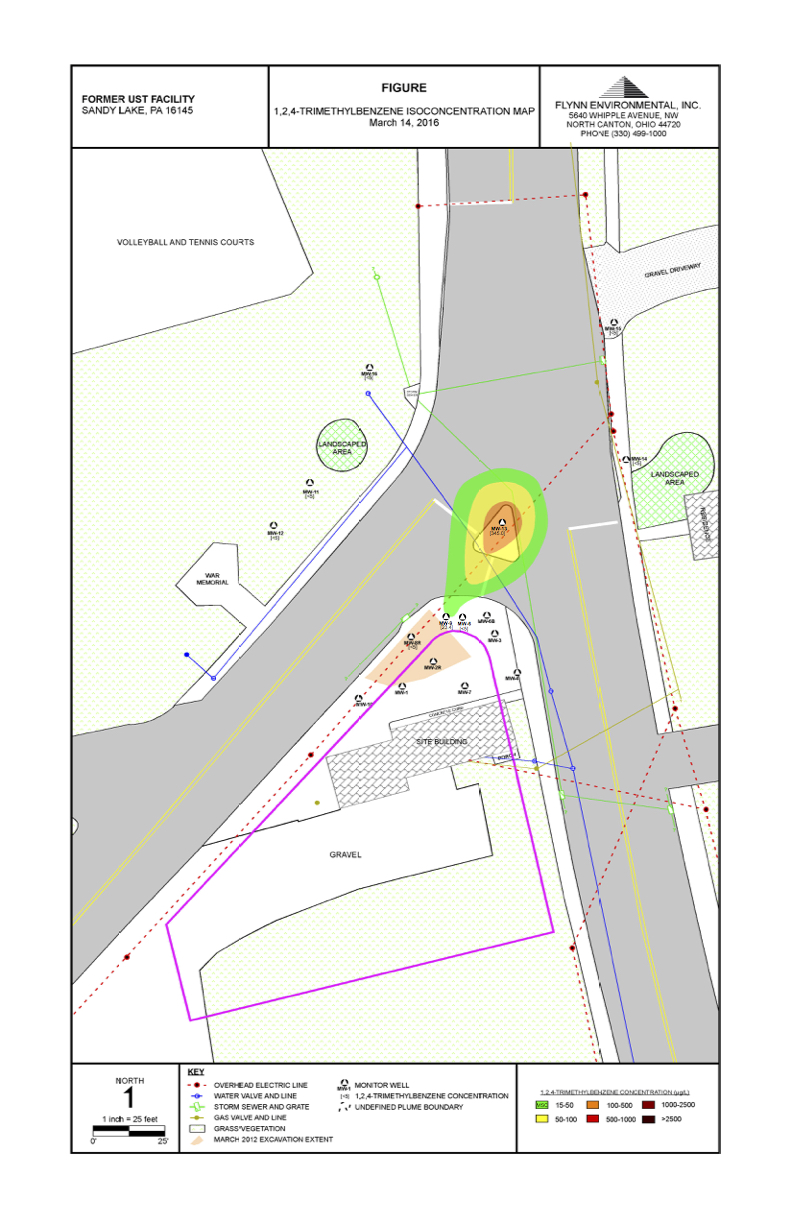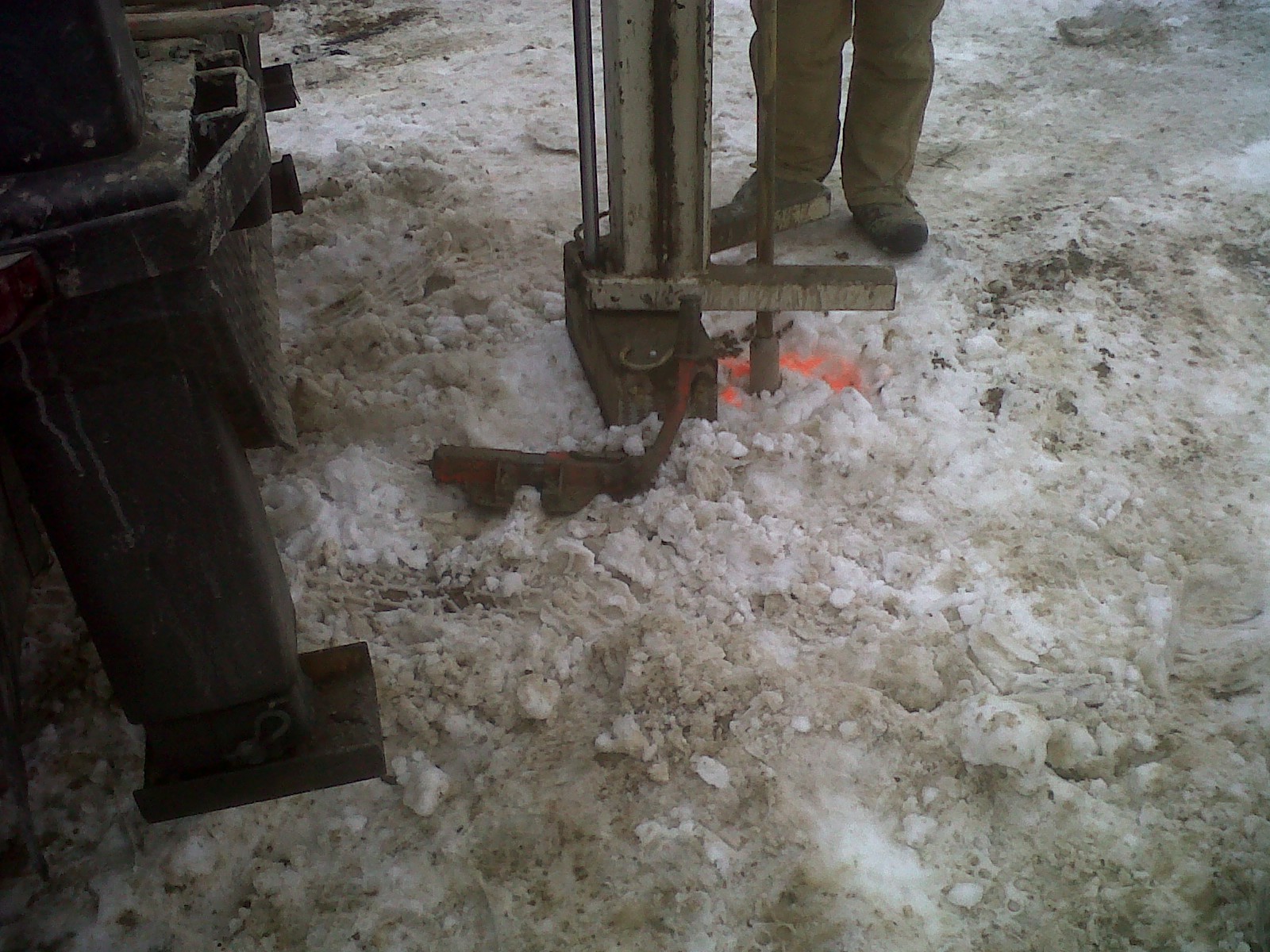
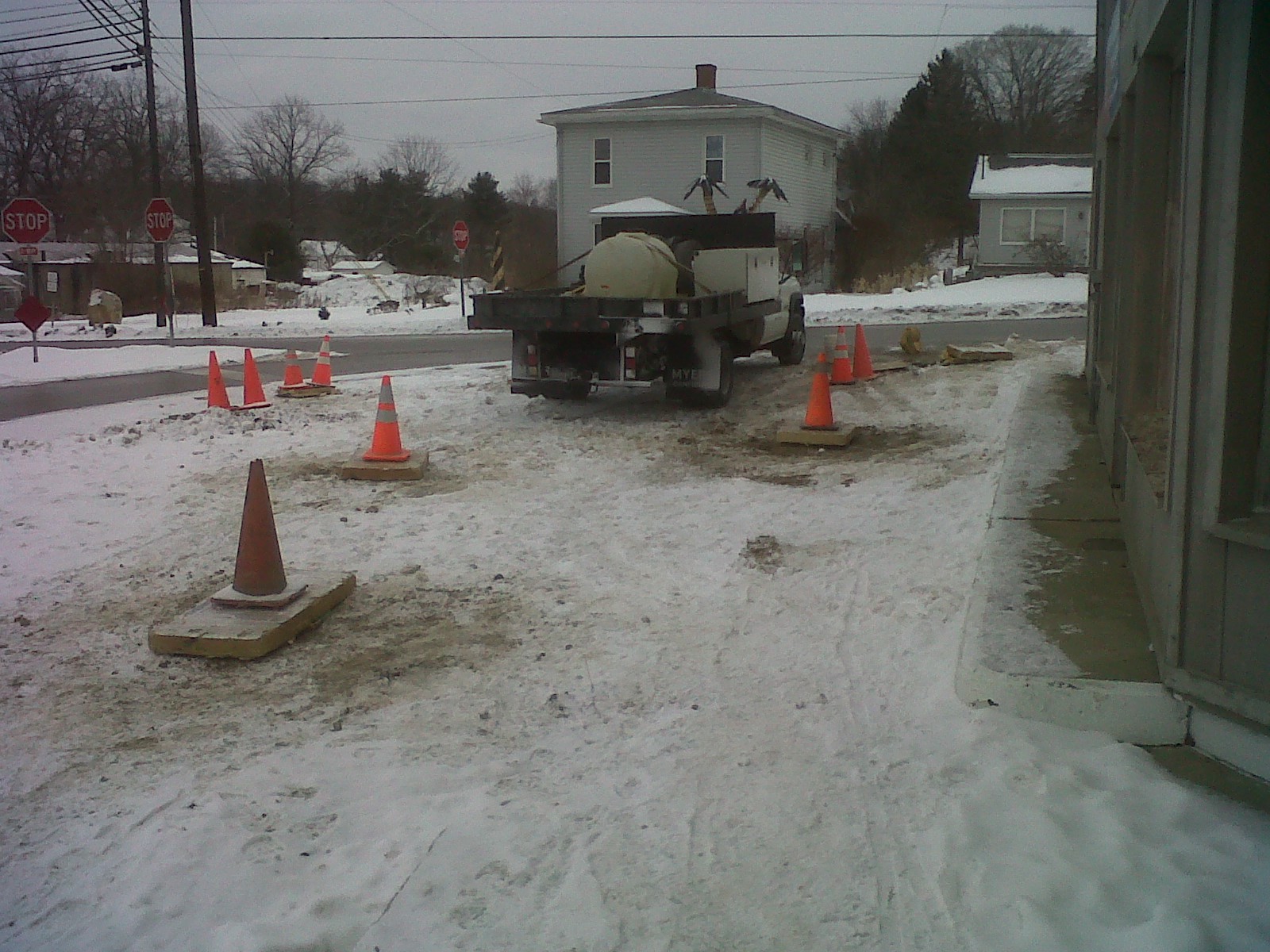
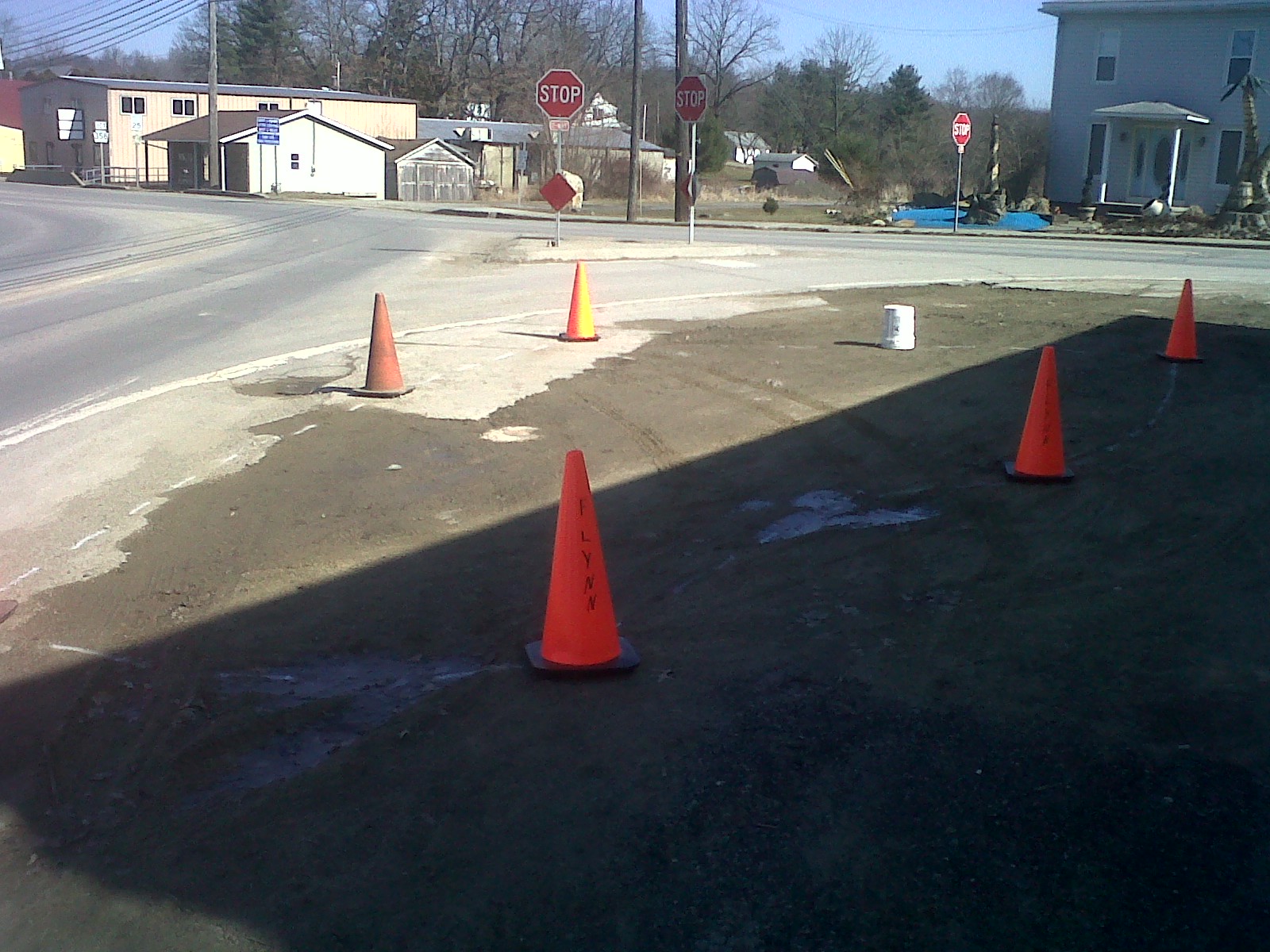

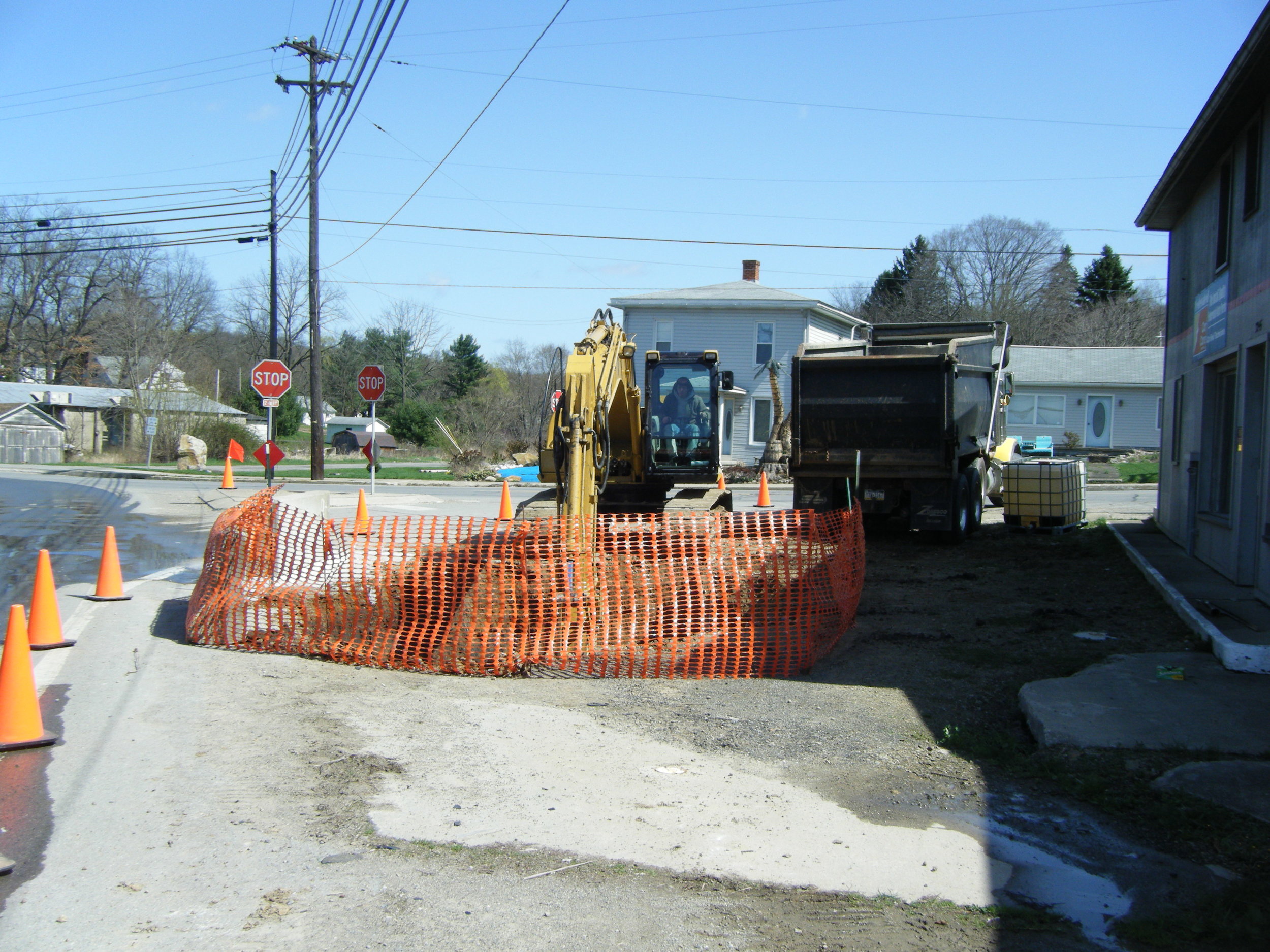
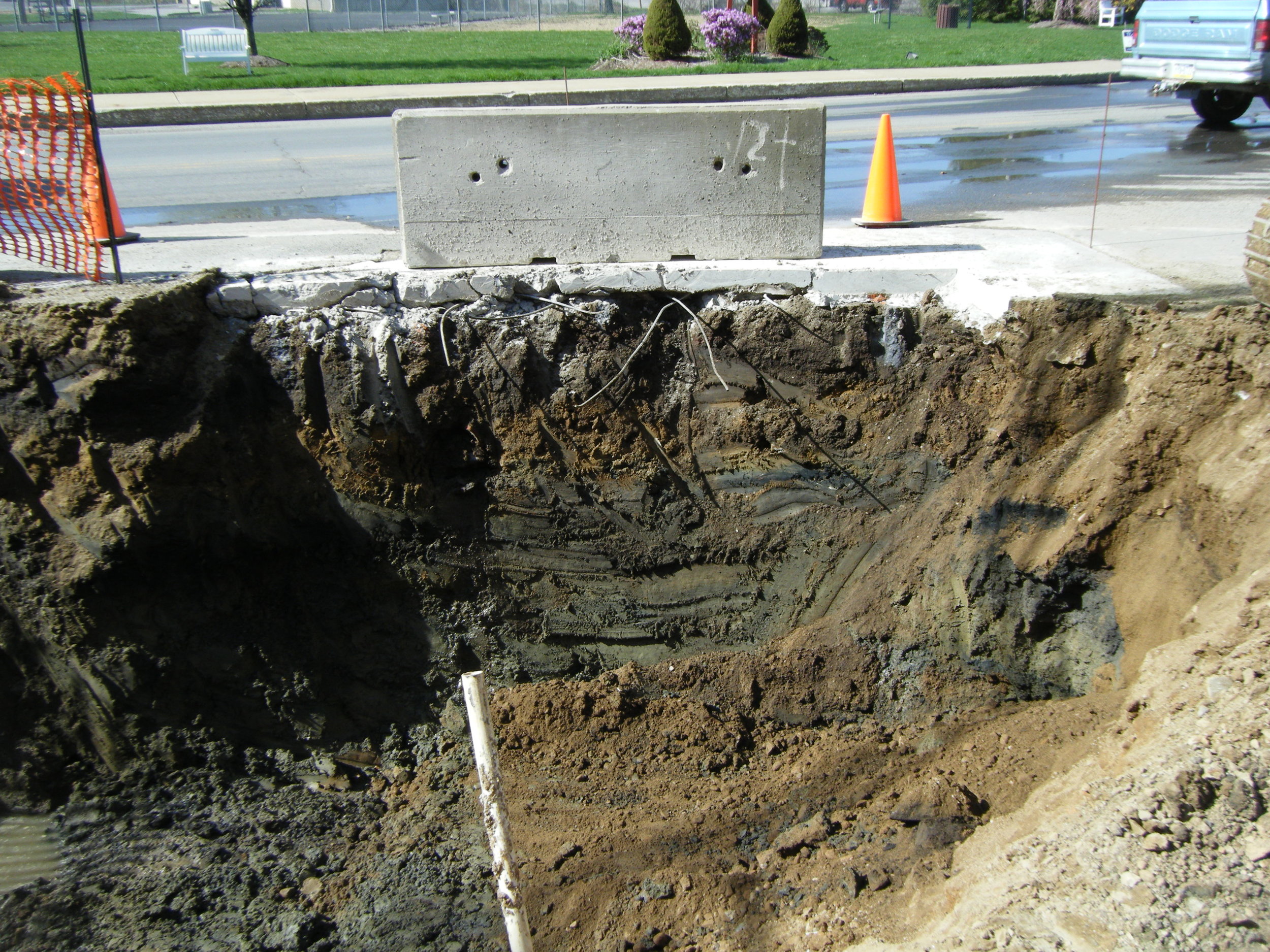

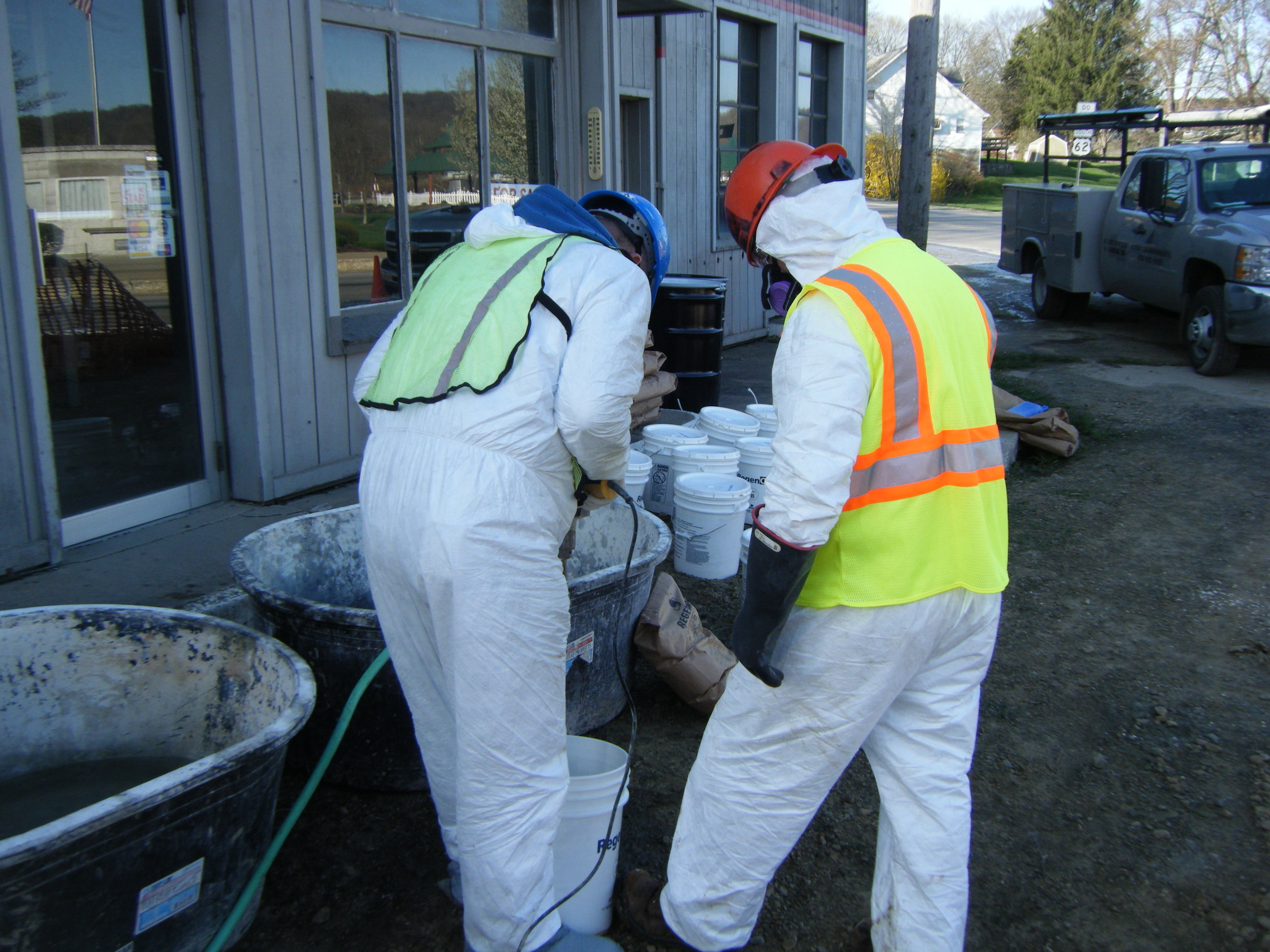
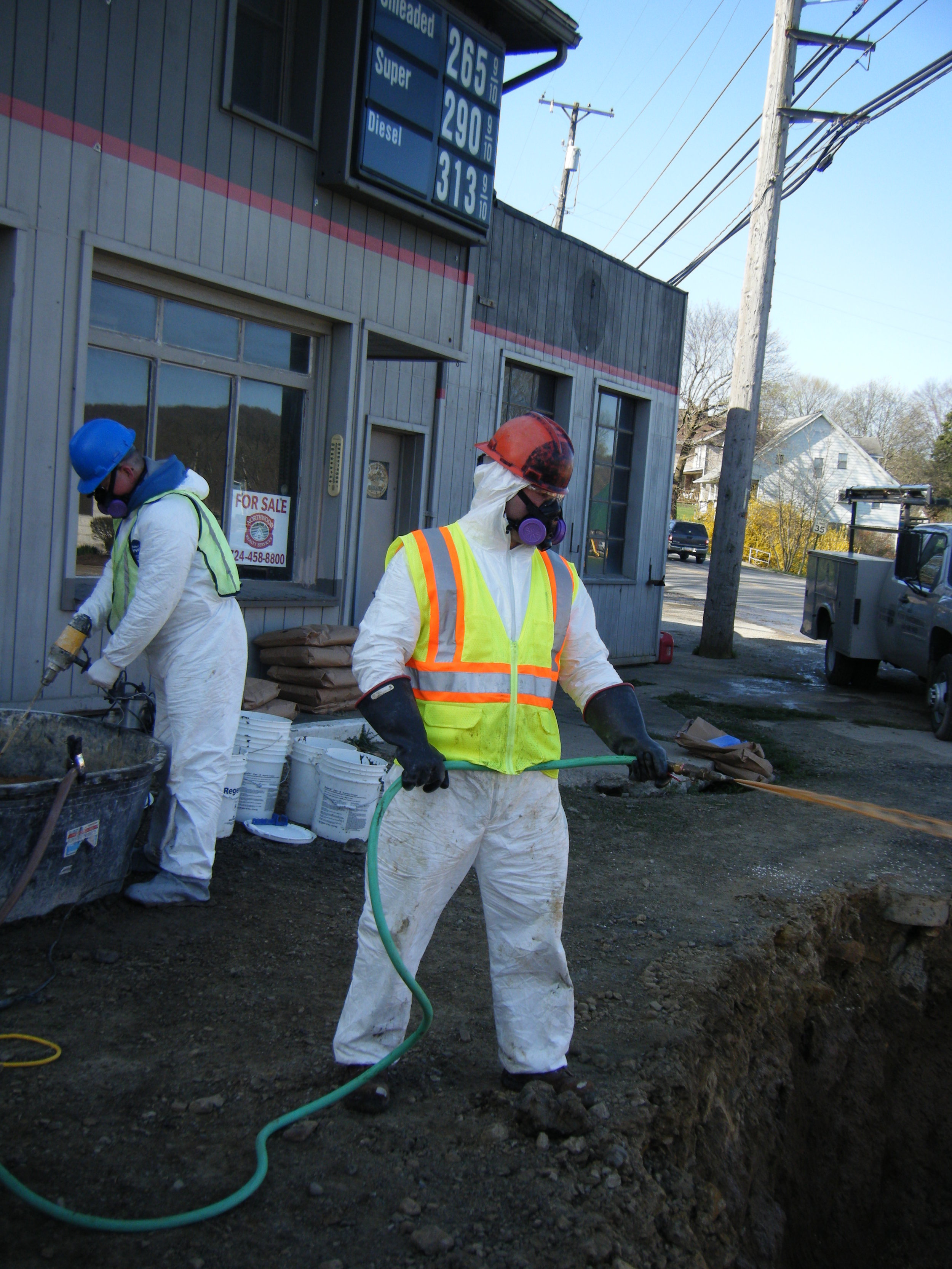

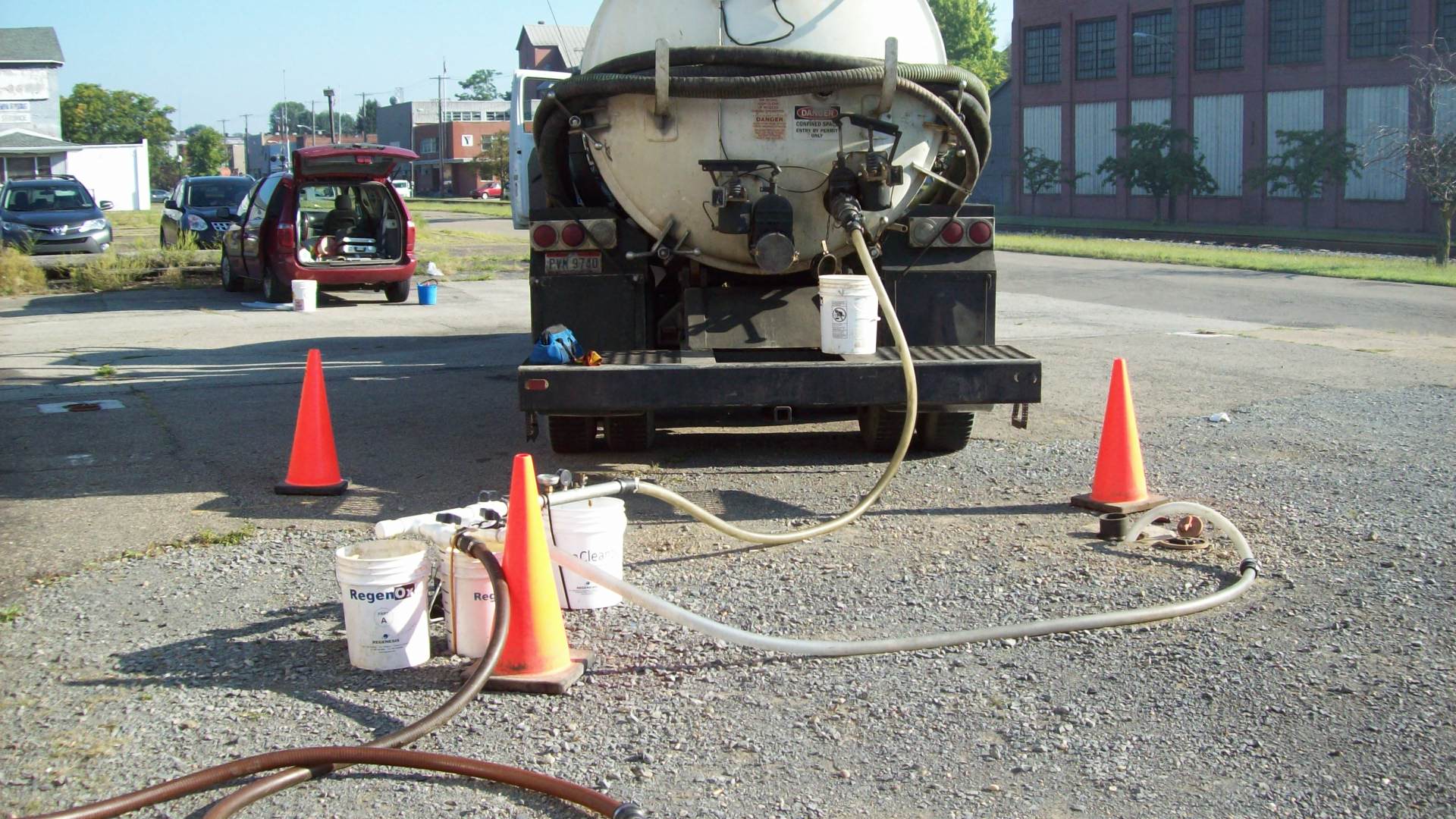
Sandy Lake, PA
Corrective actions were initiated following the discovery of unleaded gasoline and diesel fuel contamination in groundwater samples collected during the UST closure activities completed at an auto repair facility in Sandy Lake, PA in October 2009. The initial SCR/RAP was submitted to the PADEP in November of 2011. Given the extensive soil contamination identified by the site characterization activities, a soil source excavation and chemical application was completed in March of 2012 to attempt to eliminate the majority of the residual source area. A total of 172.86 tons of petroleum-contaminated soil was removed from the site, and 1,021 pounds of an in-situ oxidizing chemical, along with 160 pounds of a supplemental oxygen-releasing chemical were applied to the open excavation prior to backfilling. The soil excavation removed the majority of the previously identified soil contamination, however, confirmatory post-excavation soil sampling indicated that elevated soil concentrations remained along the edge of the adjacent street. The excavation and chemical application activities were summarized in a follow-up SCR Addendum that was submitted to the PADEP in April 2012.
Containment Data Trends
Based on the results of the site characterization and completed remedial activities, the residential Site-Specific Standards (for a used aquifer) were selected as the preferred remedial standard for all media. A Site-Specific Human Health Risk Assessment (HHRA) was presented in an SCRA/RAPA submitted to the PADEP in October of 2014. Data analysis completed in the SCRA/RAPA suggested that the completion of temporary DPE groundwater extraction events would be necessary to stabilize/decrease dissolved-phase concentrations. Three (3) temporary DPE events were performed and additional quarters of groundwater attainment monitoring were completed.
A RACR was submitted to the PADEP and an Act 2 relief of liability letter was issued for the subject property in August of 2016. An environmental covenant was placed on the subject parcel that prohibits the future installation of a potable water well.

